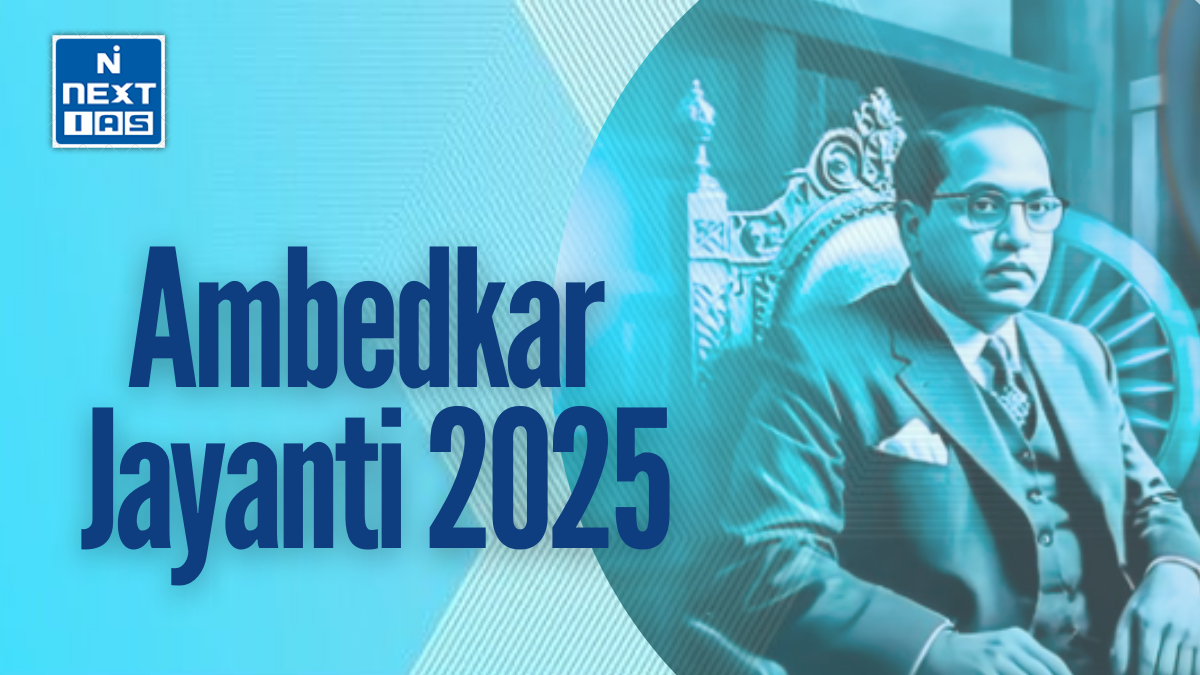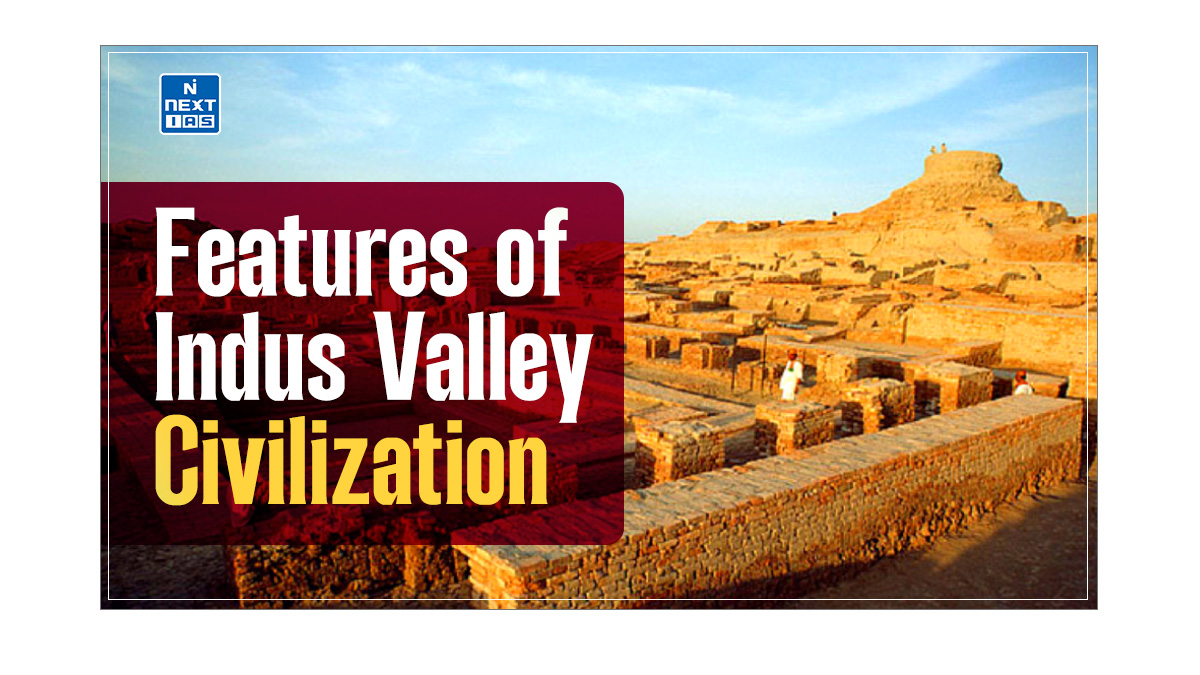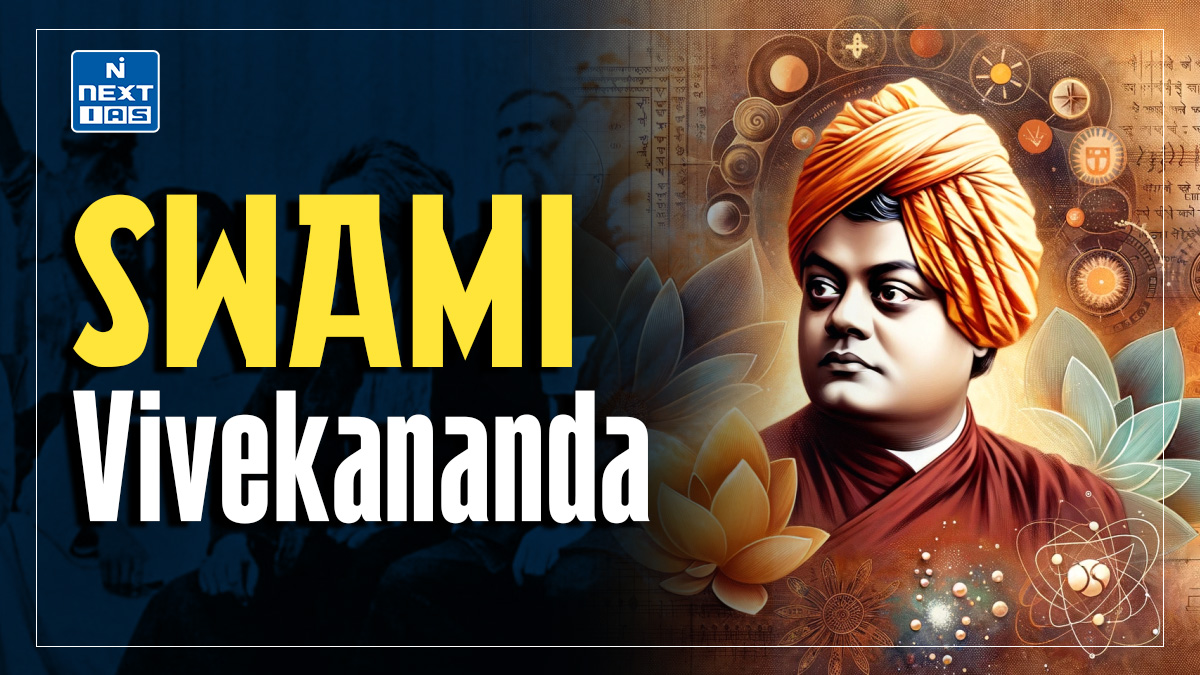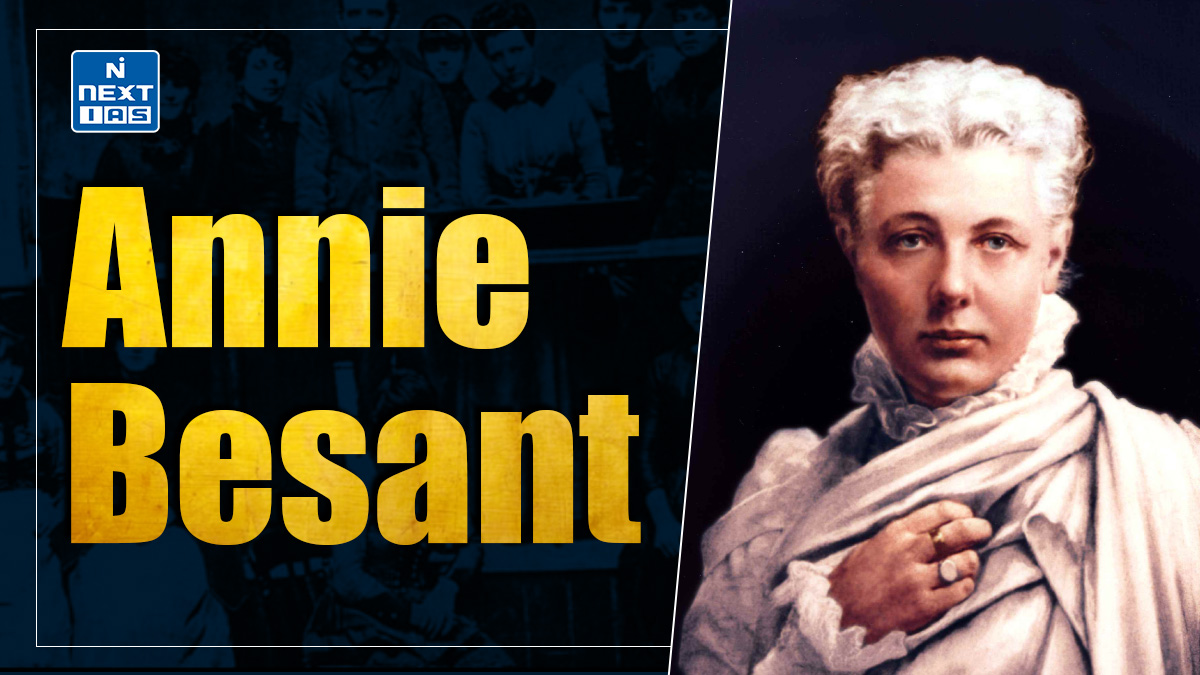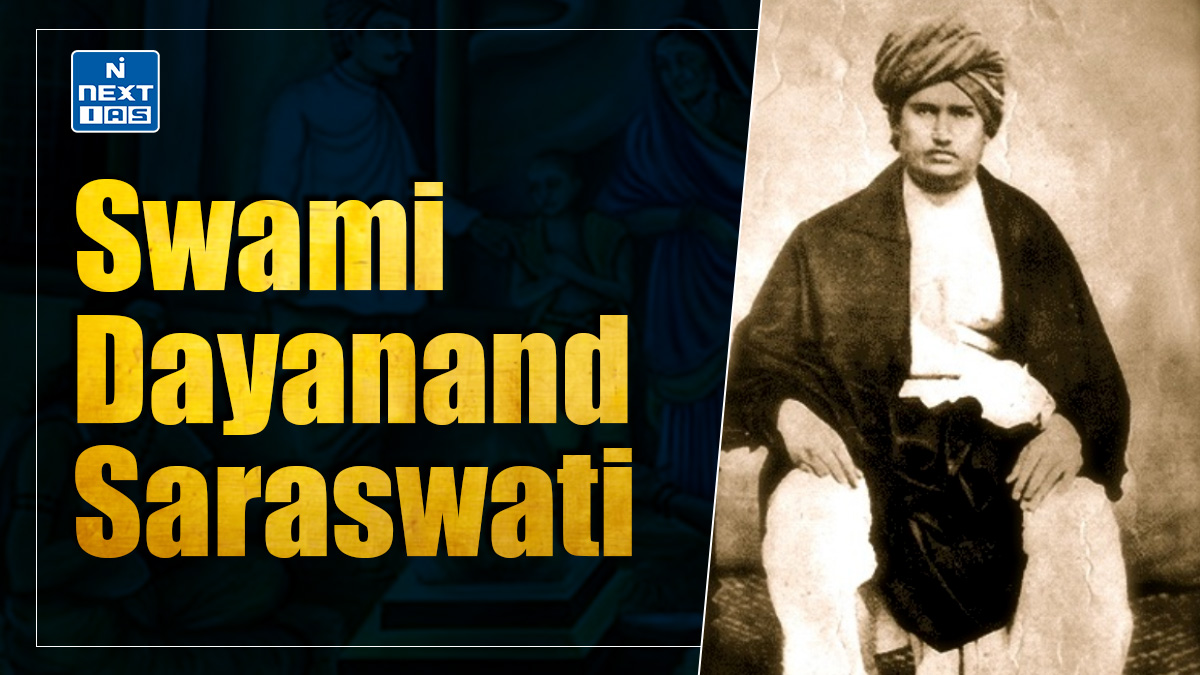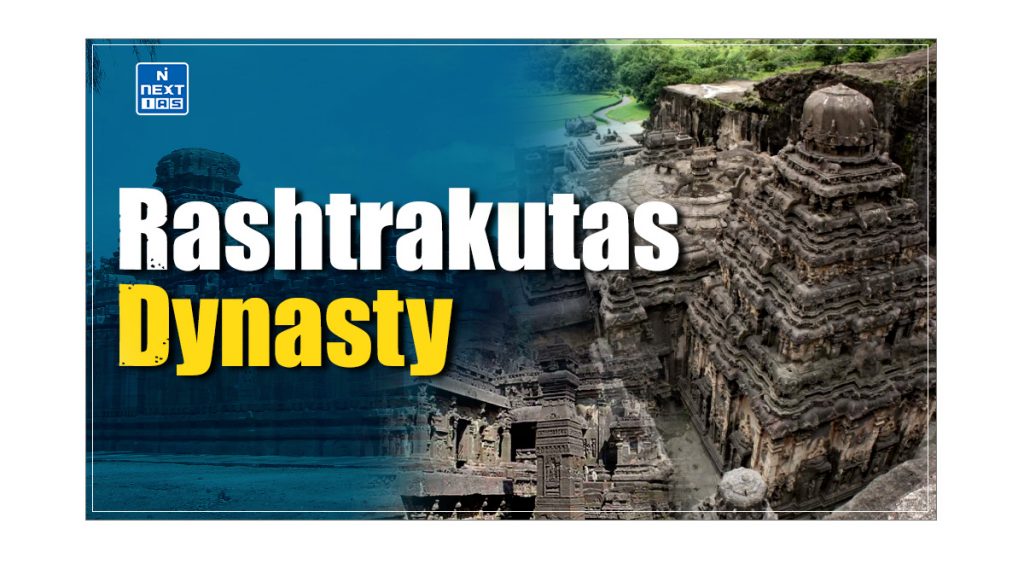
The Rashtrakutas dynasty, which ruled over the Deccan region from the 6th to the 10th centuries CE, was a powerful and influential empire in Indian history. Known for their military conquests, patronage of Jainism, and architectural achievements, they profoundly impacted India’s cultural and political landscape. This article aims to study in detail the foundation, key rulers, military conflicts, administrative structure, and cultural contributions of the Rashtrakutas Dynasty.
About Rashtrakutas Dynasty
- The Rashtrakutas dynasty, one of the most powerful dynasties in Indian history, ruled over large parts of the Deccan between the 6th and 10th centuries CE.
- The Rashtrakutas Dynasty, known for its military prowess, cultural patronage, and architectural achievements, extended across northern Maharashtra, parts of Gujarat, and Karnataka.
- During their reign, the Rashtrakutas Dynasty engaged in significant military campaigns and played a crucial role in developing art, literature, and religion, which lasted and impacted Indian history and culture.
Founder of Rashtrakuta Dynasty
- Rashtrakuta was a dynasty that ruled large parts of Deccan between the sixth and 10th centuries.
- The Rashtrakutas Dynasty was founded by Dantidurga, who overthrew Kirtivarman II, the Chalukyan king.
- This set the foundation of the Rashtrakuta Dynasty in Deccan.
- Dantidurga fixed his capital at Manyakhet or Malkhed near modern Sholapur.
- The Rashtrakutas Dynasty soon dominated the entire area of northern Maharashtra.
Capital of Rashtrakutas Dynasty
- The capital of the Rashtrakuta dynasty was initially Manyakheta (modern-day Malkhed) in present-day Karnataka.
- Later, the capital was shifted to Gongini (or Gonginapuri), which is believed to be in the present-day region of Raichur.
Key Rulers of Rashtrakutas Dynasty and their Achievements
The key rulers of the Rashtrakutas Dynasty and their key achievements are as follows:
Dantidurga
- Dantidurga was the founder of the Rashtrakuta dynasty.
- He overthrew the Chalukyan king, Kirtivarman II, and established the dynasty’s rule in the Deccan.
- His reign marked the beginning of Rashtrakuta’s dominance in northern Maharashtra and other parts of the Deccan region.
Krishna I
- Krishna I succeeded Dantidurga and was pivotal in the dynasty’s military and architectural achievements.
- He is celebrated for solidifying Rashtrakuta supremacy over the Chalukyas.
- His greatest contribution, however, was the construction of the architectural marvel, the Kailasnath Temple at Ellora, which stands as a remarkable testament to the rock-cut architectural techniques of ancient India.
Govinda II
- Under Govinda II’s rule, the Rashtrakuta capital was shifted to Malkhed from the previous capital, Nashik.
- He is noted for his efforts to expand the empire, mainly through military campaigns, one of which led to the capture of the king of Lanka and his minister, who were brought to Halapur as prisoners.
Amoghavarsha
- Amoghavarsha is considered the greatest of the Rashtrakuta kings, ruling for an impressive 68 years.
- Through successful military campaigns, he expanded the empire significantly, especially at the cost of the Eastern Chalukyas.
- A devout follower of Jainism, Amoghavarsha’s patronage led to the rise of the Digambara sect in the 9th and 10th centuries.
- His reign is often compared to that of Emperor Ashoka, as he was beloved by his subjects for his wisdom and peace-loving nature.
- Amoghavarsha was also a scholar credited with writing the first Kannada book on poetics.
Indra III
- Indra III, the grandson of Amoghavarsha, played a crucial role in restoring the Rashtrakuta Empire after internal strife.
- He re-established the dynasty’s dominance and is remembered as a significant ruler.
- Al-Masudi, an Arab traveller, regarded the Rashtrakuta king Balhara (likely Indra III) as the greatest king of India during his reign.
Expansion and Military Conflicts of Rashtrakuta Dynasty
- The Rashtrakutas Dynasty were aggressive expansionists, often locking horns with rival dynasties for regional supremacy.
- The Rashtrakutas Dynasty sought control over the strategic territories of Gujarat and Malwa by engaging in prolonged conflicts with the Pratiharas.
- Simultaneously, the Rashtrakutas waged relentless wars against the Eastern Chalukyas of Vengi in the east and the Pallavas of Kanchi and Pandyas of Madurai in the south.
- Krishna-I, who succeeded Dantidurga, not only solidified Rashtrakuta’s dominance over the Chalukyas but also expanded the empire’s reach significantly, establishing a firm base for the dynasty’s future conquests.
Administration of Rashtrakutas Dynasty
- In the Rashtrakuta Kingdom, the directly administered areas were divided into rashtras (provinces), visaya and bhukti.
- The head of the rastra was called Rashtrapati. The Visaya was like a modern district, and the bhukti was smaller than it.
- The smaller units’ main purpose was to realise land revenue and some attention to law and order.
- All the officials were paid by giving them grants of rent-free land.
- Below these territorial divisions were the villages that comprised the basic administration unit.
- The village headman carried out the village administration.
- Village committees managed local schools, tanks, temples and roads.
- An important feature of the Rashtrakutas Dynasty was the rise of hereditary revenue officers called nad-gavundas or desa-gramakutas.
- As these hereditary elements’ power grew, the village committees’ power became weaker.

Cultural and Religious Contributions of Rashtrakutas Dynasty
- The Rashtrakuta kings were known for their significant patronage of Jainism, particularly under the reign of Amoghavarsha, a devout follower of the Digambara sect of Jainism.
- His reign saw a rapid rise in the influence of Jainism, especially in the 9th and 10th centuries. Amoghavarsha’s support for Jainism is evident in his creation of Jain sculptures at Shravanabelagola, a major religious and cultural centre for the Jain community.
- Though Jainism was a major focus, Buddhism remained dominant during the Rashtrakuta period.
- The caves of Ellora, renowned for their rock-cut architecture, demonstrate this dual religious patronage. Many caves are dedicated to Jainism and Buddhism.
- However, the influence of the Vedic religion persisted during this period, with the construction of the magnificent Kailasnath Temple at Ellora, which is dedicated to Hinduism.
- This architectural masterpiece is a testament to the Rashtrakutas’ religious tolerance and cultural diversity.
Language of Rashtrakutas Dynasty
- During the rule of Rashtrakutas, the Kannada language witnessed significant growth.
- The Rashtrakutas Dynasty also marked the end of the dominance of the Sanskrit and Prakrit languages.
- Most of the literature at the time was created in bilingual format – in both Sanskrit and Kannada.
- The inscriptions of that period demonstrate the use of Kannada as the primary administrative language in conjunction with Sanskrit.
- The government archives also used Kannada to record information relating to kings’ land grants.
- The Rashtrakutas dynasty kings were great patrons of the arts and letters. In addition to all other dominant languages, scholars also wrote in apabhramsha, the so-called corrupt languages that were forerunners of various modern languages.
- The famous apabhramsha poet Svayambhu and his son probably lived at the Rashtrakuta court.
Literature in Rastrakuta Dynasty
- The Rashtrakutas Dynasty made significant contributions to literature.
- Amoghavarsha was an author credited with writing the first Kannada book on poetics.
- The Rashtrakutas dynasty also promoted Sanskrit literature, further enriching India’s cultural and intellectual landscape.
- This combination of religious patronage, literary achievements, and architectural brilliance marks the Rashtrakutas Dynasty as key contributors to the cultural fabric of ancient India.
Art and Architecture of Rashtrakutas Dynasty
- The Rashtrakutas Dynasty were great exponents of rock-cut architecture’s supremacy in India.
- Their architectural achievements are prominently displayed in the famed Ellora caves, most of which were excavated during their rule.
- Among these, the 3-story Kailasnath Temple epitomises rock-cut architecture’s magnificence.
- This monumental structure, dedicated to Lord Shiva, is a marvel of ancient Indian engineering and artistry, built by the Rashtrakuta king Krishna I.
- In addition to Ellora, the Rashtrakutas Dynasty are credited with other significant architectural feats.
- The Elephanta Caves, located on an island off the coast of Mumbai, are another example of their mastery of rock-cut architecture.
- Originally known as Sripuri, the Portuguese later renamed the site after discovering its large elephant sculpture.
- The Ellora temple and the Elephanta Caves share a close architectural similarity, showcasing the continuity of craftsmen between these monumental projects.
- The entrance to the Elephanta Caves features massive figures of Dwarapalakas (guardians of the temple) at the doorway, highlighting the site’s grandeur.
- The walls surrounding the prakara (enclosure) the sanctum are adorned with intricate sculptures, including depictions of Nataraja, Gangadhara, Ardhanareeshvara, Somaskanda, and the famous Trimurthi—a six-meter-high sculpture representing Shiva’s three aspects:
- creator,
- preserver, and
- destroyer.
- These rock-cut masterpieces of the Rashtrakutas Dynasty underscore their enduring legacy in Indian art and architecture.
Conclusion
The Rashtrakutas dynasty’s legacy is firmly embedded in India’s cultural, architectural, and political history. Through their military conquests, they shaped the Deccan region and left a lasting impact. Their patronage of Jainism, contributions to literature, and architectural marvels like the Kailasnath Temple and Elephanta Caves reflect their artistic and engineering prowess. The Rashtrakutas not only influenced Indian history but also set the stage for enduring cultural and religious developments.
Frequently Asked Questions (FAQs)
Who founded the Rashtrakuta dynasty?
The Rashtrakuta dynasty was founded by Dantidurga, who established the dynasty in the mid-8th century.
Which caste were Rashtrakutas?
The Rashtrakutas were a dynasty that belonged to the Kshatriya caste.
Who was the founder of Rashtrakuta dynasty?
The Rashtrakuta dynasty was founded by Dantidurga.
